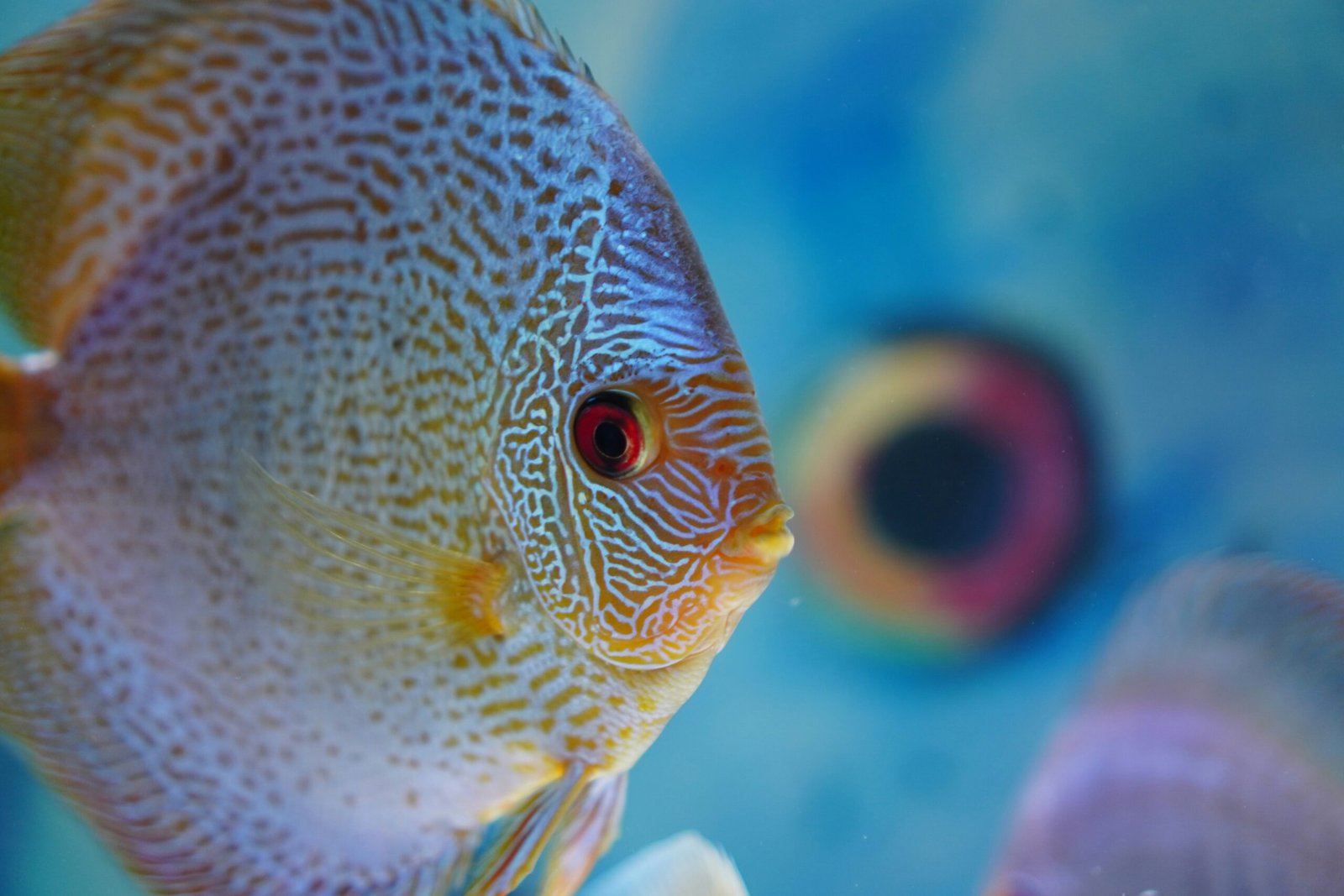A Step-by-Step Guide to Setting Up and Maintaining a Fish Aquarium
When it comes to fishkeeping, there are a few key factors to consider. First and foremost, you’ll need to decide what type of aquarium you want to set up. There are several options to choose from, including freshwater, saltwater, and even brackish water aquariums. Each type has its own unique requirements and challenges, so it’s important to do your research and choose the one that best suits your interests and experience level.
Once you’ve decided on the type of aquarium, the next step is to select the appropriate size and location. The size of your aquarium will depend on the space you have available and the number and size of fish you plan to keep. It’s generally recommended to start with a larger tank, as it provides a more stable environment and allows for a greater variety of fish species.
When it comes to choosing a location for your aquarium, it’s important to consider factors such as sunlight exposure, temperature fluctuations, and accessibility for maintenance. Avoid placing your tank near windows or direct sunlight, as this can lead to excessive algae growth and temperature fluctuations. It’s also important to ensure that the tank is placed on a sturdy and level surface, as a full aquarium can be quite heavy.
Once you have your aquarium set up and in the right location, it’s time to think about the equipment you’ll need. This includes a filtration system to remove waste and maintain water quality, a heater to regulate temperature, and a lighting system to provide the necessary light for your fish and plants. Additionally, you’ll need to consider substrate options, such as gravel or sand, and decorations to create a visually appealing environment for your fish.
With the equipment in place, it’s time to cycle your aquarium. This is a crucial step in establishing a healthy and stable environment for your fish. Cycling involves the growth of beneficial bacteria that break down harmful ammonia and nitrite, which are produced by fish waste. There are several methods for cycling an aquarium, including fishless cycling and using hardy fish species to kick-start the process. Whichever method you choose, be sure to monitor water parameters regularly and make any necessary adjustments.
Once your aquarium is fully cycled and the water parameters are stable, it’s time to introduce your fish. It’s important to research the specific needs and compatibility of the fish species you plan to keep. Some fish are more suited to community tanks, while others prefer to be kept alone or in pairs. It’s also important to consider the size and activity level of your fish, as well as their dietary requirements.
Regular maintenance is key to keeping your aquarium healthy and thriving. This includes regular water changes to remove accumulated waste and replenish essential minerals, as well as cleaning the filter and checking water parameters. Monitoring the health and behavior of your fish is also important, as any changes could indicate an underlying issue. By staying on top of maintenance tasks and addressing any issues promptly, you can ensure a long and happy life for your fish.
Research and Planning
Before diving into the world of fishkeeping, it’s important to do some research and planning. This will help you understand the different types of fish, their care requirements, and the equipment needed for your aquarium.
Start by deciding what type of fish you want to keep. Consider factors such as their size, temperament, and compatibility with other fish. Research their specific care needs, including water temperature, pH levels, and diet.
For example, if you are interested in keeping tropical fish, you will need to ensure that your aquarium can maintain a stable temperature of around 75-80 degrees Fahrenheit. Some tropical fish, like discus or angelfish, require a slightly higher temperature, while others, like tetras or guppies, can tolerate a slightly lower temperature.
Additionally, different fish species have different dietary requirements. Some fish are herbivores and require a diet rich in plant matter, while others are carnivores and need a diet high in protein. It’s important to provide the appropriate food for your fish to ensure their health and well-being.
Next, determine the size of the aquarium you want to set up. Keep in mind that larger tanks are generally easier to maintain as they provide more stable water conditions. Consider the available space in your home and choose a suitable location for your aquarium.
When selecting the location for your aquarium, it’s important to consider factors such as sunlight exposure and proximity to electrical outlets. Direct sunlight can cause algae growth in your tank, so it’s best to place it away from windows or use curtains to block out excessive light. Having easy access to electrical outlets will make it easier to set up and maintain the equipment for your aquarium.
Lastly, make a list of the equipment you’ll need, such as a tank, filter, heater, lighting, substrate, decorations, and water testing kits. It’s important to invest in quality equipment to ensure the well-being of your fish.
For example, a good filtration system is essential for maintaining clean and healthy water in your aquarium. It helps remove waste and toxins, keeping the water parameters stable. Depending on the size of your tank, you may need a canister filter, a hang-on-back filter, or an undergravel filter. Research the different types of filters available and choose one that suits your needs.
In addition to filtration, a heater is necessary to maintain the appropriate water temperature for your fish. Some fish, like bettas, require a specific temperature range to thrive, so investing in a reliable heater with a built-in thermostat is crucial.
Once you have gathered all the necessary equipment, you can move on to the next step of setting up your aquarium. With careful research and planning, you’ll be well-prepared to create a thriving and beautiful underwater environment for your fish.
Setting Up the Aquarium
Now that you have your research and planning done, it’s time to set up your aquarium. Follow these steps:
1. Clean the Tank
Start by cleaning the tank thoroughly. Rinse it with water and use a sponge or algae scraper to remove any dirt or residue. Avoid using soap or cleaning agents, as they can be harmful to fish.
2. Add Substrate
Add a layer of substrate to the bottom of the tank. This can be gravel, sand, or a specialized aquarium substrate. Rinse the substrate before adding it to the tank to remove any dust or debris.
3. Install Equipment
Install the filter, heater, and lighting according to the manufacturer’s instructions. These components are essential for maintaining a healthy environment for your fish.
4. Fill the Tank
Fill the tank with water, leaving some space at the top for decorations and to prevent overflow. Use a dechlorinator to remove any chlorine or harmful chemicals from tap water.
5. Cycle the Aquarium
Cycling the aquarium is an important step to establish a stable and healthy environment for your fish. This process involves growing beneficial bacteria that will break down harmful substances in the water. You can cycle the tank by adding ammonia or using a bacterial supplement. Test the water regularly to monitor the cycling process.
6. Decorate the Aquarium
Add decorations such as rocks, driftwood, and plants to create a natural and visually appealing environment for your fish. Make sure the decorations are aquarium-safe and do not pose any risks to the fish.
7. Introduce Fish
Once the tank is fully set up and cycled, it’s time to introduce your fish. Start with a small number of hardy fish that are suitable for beginners. Allow them to acclimate to the new environment by floating their bag in the tank for about 15-20 minutes before releasing them.
It is important to note that when introducing fish to a new aquarium, it is recommended to start with a small number of fish. This allows the tank’s ecosystem to adjust to the new inhabitants and reduces the risk of overloading the filtration system. Additionally, it is crucial to choose fish species that are compatible with each other in terms of temperament, water parameters, and size. Researching the specific requirements and compatibility of different fish species will help ensure a harmonious and thriving community in your aquarium.
When adding fish to the tank, it is also important to consider the acclimation process. This involves gradually adjusting the temperature and chemistry of the water in the bag containing the fish to match that of the aquarium. This can be done by floating the sealed bag in the tank for around 15-20 minutes. This allows the fish to gradually adjust to the new environment and reduces the risk of shock or stress. After the acclimation period, carefully release the fish into the tank, ensuring they have plenty of space to swim and hide if needed.
Once the fish are introduced to the aquarium, it is important to closely monitor their behavior and health. Regularly test the water parameters such as temperature, pH, ammonia, nitrite, and nitrate levels to ensure they are within the appropriate range for the specific fish species. Observing the fish for any signs of stress, disease, or aggression is also crucial. Prompt action should be taken if any issues are detected, such as adjusting water parameters, providing appropriate nutrition, or seeking advice from a knowledgeable aquarium professional.
8. Monitoring Equipment
Regularly check the functioning of all the equipment in your aquarium, such as the heater, filter, and air pump. Make sure they are working properly and replace any faulty equipment immediately. Malfunctioning equipment can disrupt the balance of the aquarium and put your fish at risk.
9. Quarantine Tank
Consider setting up a separate quarantine tank for new fish before introducing them to the main aquarium. This will help prevent the spread of diseases and parasites to the existing fish population. Quarantine new arrivals for at least a few weeks, monitoring their health closely before adding them to the main tank.
10. Observing and Enjoying
Lastly, take the time to observe and enjoy your aquarium. Watch the fish swim, interact with each other, and explore their environment. It can be a calming and therapeutic experience. Regular observation will also help you notice any changes in behavior or appearance, allowing you to address any issues promptly.
By following these maintenance tasks, you can create a healthy and thriving aquarium that will bring you joy and satisfaction for years to come.









